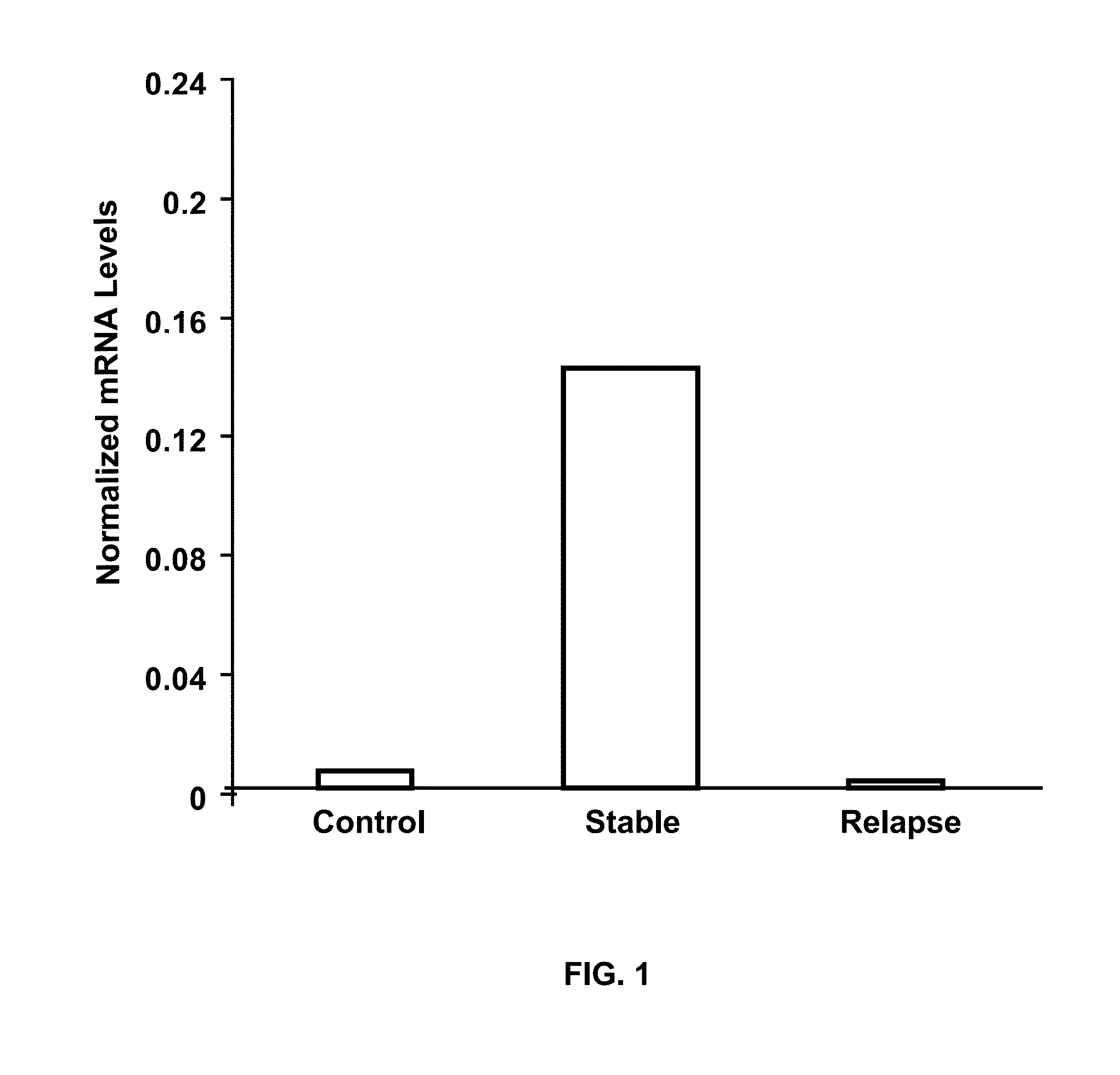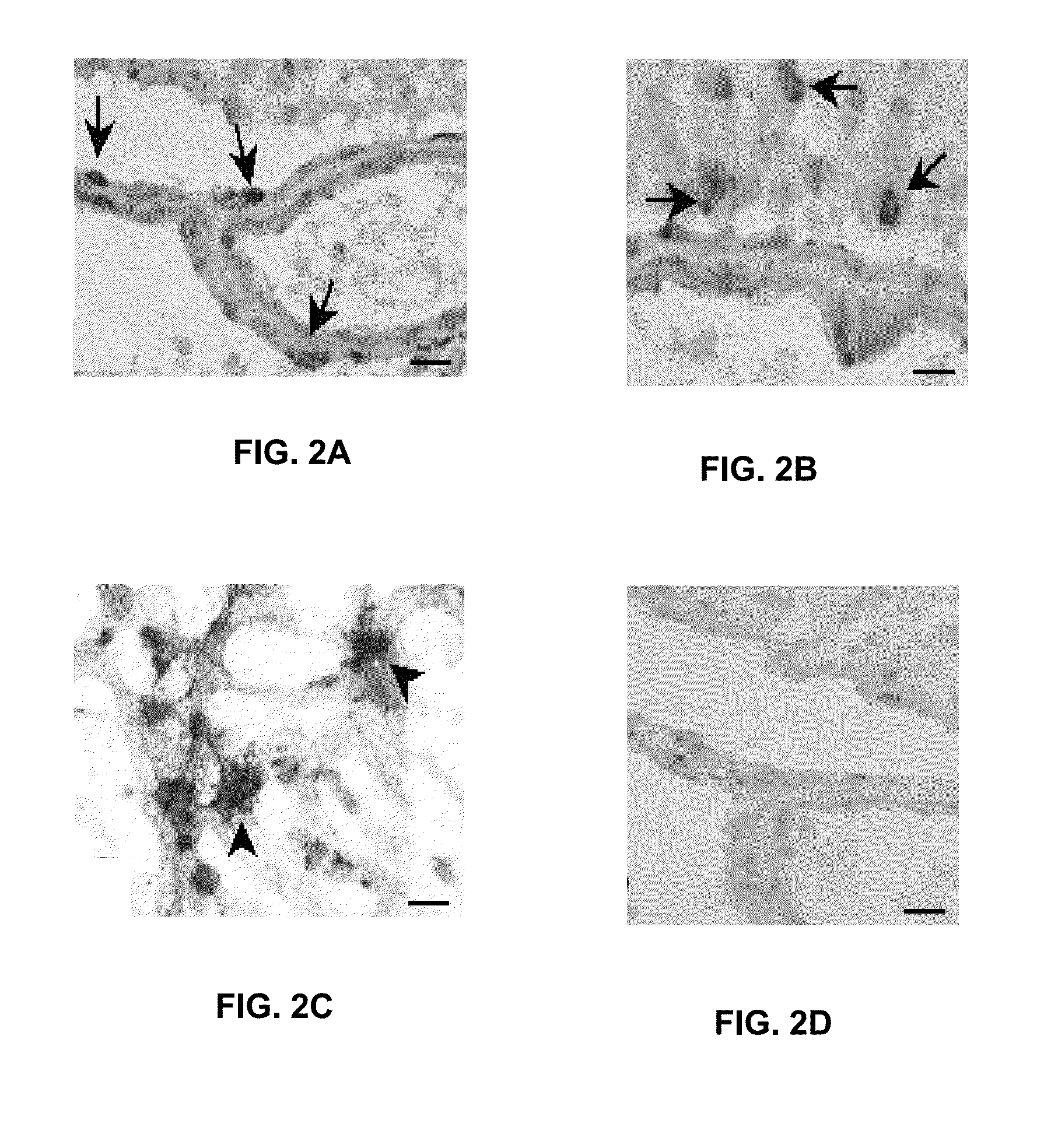Marker of Diagnosis and Prognosis in Multiple Sclerosis
a multiple sclerosis and diagnostic technology, applied in the field of diagnostic neurology, can solve the problems of poor correlation between mri results and disease activity, complicated long-term predictive value, and low cyclin dependent pathway, and achieve the effect of reducing rgc-32 and increasing the number
- Summary
- Abstract
- Description
- Claims
- Application Information
AI Technical Summary
Benefits of technology
Problems solved by technology
Method used
Image
Examples
example 1
Methods
Collection of PBMC and Isolation of RNA and CD4+ Cells
[0041]Peripheral blood mononuclear cells (PBMC) are collected using BD Vacutainer CPT tubes (Becton Dickinson, Franklin Lakes, N.J.). Mononuclear cells are isolated from fresh blood according to the manufacturer's protocol. In the case of PBMC, RNA isolation and cell lysate preparation for protein analysis are performed the same day (12). For purification of total RNA from PBMC, RNeasy Kits (Qiagen, Santa Clarita, Calif.) are used. Generally,
Isolation of CD4+ Cells
[0042]PBMCs were collected using BD Vacutainer CPT tubes (Becton Dickinson, Franklin Lakes, N.J.). The PB CD4+ cells were isolated by negative selection using magnetic microbeads (Miltenyi Biotec, Auburn, Calif.). The purity of human T-cell subsets obtained using this technique has been consistently >95%, as assessed by FACS analysis (16).
Real-Time Quantitative PCR
[0043]RNA is reverse-transcribed to cDNA using reverse transcriptase reagents according to the manuf...
example 2
Expression of RGC-32
[0045]Peripheral Mononuclear Cells (PBMC) from Relapsing Remitting (RR) MS Patients and Controls
[0046]Initially, the expression of RGC-32 mRNA was examined using cDNA profiling arrays (Clontech, Mountain View, Calif.). RGC-32 expression was significantly lower in CD3+ T cells from patients with MS relapses than in healthy controls (10-11). In the next step, a total of 20 patients (10 patients with inactive MS and 10 with relapses) and 20 healthy, age-, gender- and race-matched controls were examined. In these patients, RGC-32 expression was analyzed in unstimulated PBMCs under conditions as close as possible to the in vivo situation because alterations in these cells are likely to have predictive value for clinical exacerbations.
[0047]Expression of RGC-32 and L13 mRNA, a housekeeping gene, was measured by real-time PCR. In addition, the expression of FasL and CDC2 mRNA was assessed, since the expression of their genes is regulated by RGC-32. Significantly lower ...
example 3
Glatiramer Acetate Treatment of Multiple Sclerosis
In Vivo Study
[0055]In a study, multiple sclerosis patients are treated with glatiramer acetate (20 mg) by subcutaneous injection every day and followed for up to 2 years. To increase the likelihood of including patients who will have relapses during this study, patients presenting with MS relapses are preferentially admitted into the study.
Samples
[0056]PBMC are obtained from patients at 0, 2, 4, 26, 52, 78, and 104 weeks, at the time of their outpatient visits. PBMC are also obtained from controls at 0 weeks. Protein cell lysates and RNA samples are first tested for RGC-32 expression in patients with stable disease to allow assessment of the consistency of the pattern of these markers in stable MS. These data will provide baseline data for comparison when patients' measurements are obtained at later time points.
[0057]A total of 30 patients with relapsing remitting MS is enrolled in the study. The patients are primarily recruited from...
PUM
| Property | Measurement | Unit |
|---|---|---|
| real time PCR | aaaaa | aaaaa |
| Magnetic Resonance Imaging | aaaaa | aaaaa |
| MRI | aaaaa | aaaaa |
Abstract
Description
Claims
Application Information
 Login to View More
Login to View More - R&D
- Intellectual Property
- Life Sciences
- Materials
- Tech Scout
- Unparalleled Data Quality
- Higher Quality Content
- 60% Fewer Hallucinations
Browse by: Latest US Patents, China's latest patents, Technical Efficacy Thesaurus, Application Domain, Technology Topic, Popular Technical Reports.
© 2025 PatSnap. All rights reserved.Legal|Privacy policy|Modern Slavery Act Transparency Statement|Sitemap|About US| Contact US: help@patsnap.com



